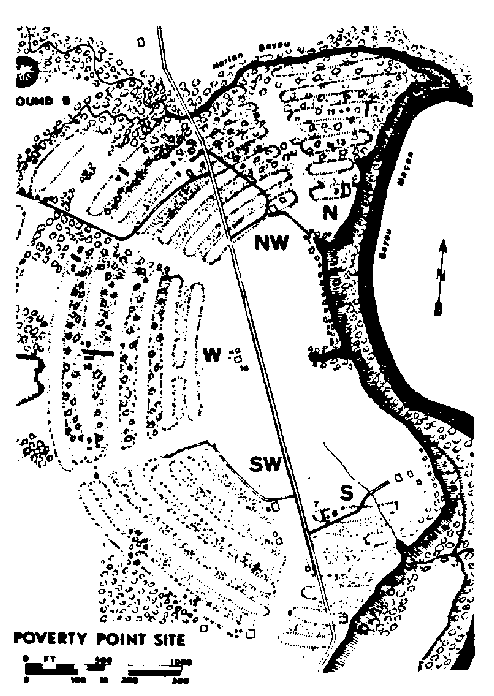 |
Science Frontiers ONLINE No. 27: May-Jun 1983 |
|
|
An Earthen Stonehenge
The six concentric octagonal (or circular) ridges at Poverty Point, Louisiana, are interupted by four avenues, as shown in the illustration. Other avenues may have existed to the east, assuming the ridges actually continued to complete the figure.
K. Brecher and W.G. Haag have contended in earlier papers that two of the existing four avenues were solstice markers. R.D. Purrington, in the first of a pair of papers in American Antiquity, maintains that the Poverty Point ridges have been so badly eroded over the last 3,000 years that sight lines cannot be determined with any accuracy. In fact, the precise center of the octagonal figure is a matter of judgment. Purrington's reconstruction of sight lines along the avenues, using his assumed center, does not support the idea that the avenues were solstice markers.

Brecher and Haag responded in the second paper that their viewing center is 100 meters from Purrington's. With this change. they claim good fits for two of the avenues as solstice markers. One of the two remaining avenues turn out to mark the setting of Canopus, the second brighest star in the sky. Even the unassigned last avenue has astronomical significance; it marks the setting of Gamma Draconis, a second-magnitude star, which the ancients employed as a nocturnal hour hand as it swung around the pole star.
(Purrington, Robert D.; "Supposed Solar Alignments at Poverty Point," American Antiquity, 48:157, 1983. Brecher, Kenneth, and Haag, William G.; "Astronomical Alignments at Poverty Point," American Antiquity, 48:161, 1983.)
Comment. It seems that just a difference of 100 meters in the viewing center makes the difference between a people who merely liked to build huge geometrically shaped ridges (Purrington's idea) and a race trying -- Stonehenge fashion -- to reflect the motions of the sun and stars in a colossal earthern "computer" over a mile in diameter. The real issue, of course, is not 100 meters but one's conception of ancient man!